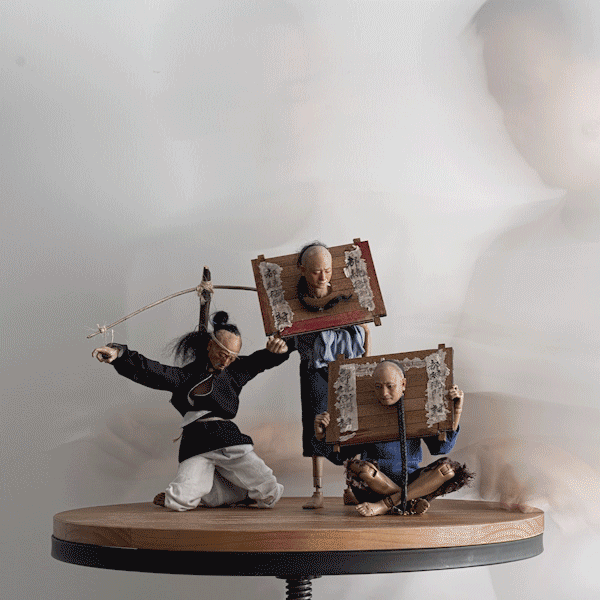Soul Capture
Medium format digital photography
1800*1200mm
2020-2021 / Shanghai

In 1900, Nietzsche died.
Just as the idea of eternal return that he once thought over and over again has since been repeatedly confirmed, would the pain at his last moment occur endlessly? Did the horse that was whipped at the door of the Turin Hotel and its image of repeated tragedies finally defeat Nietzsche?
In the same year, under the skyline of the capital city in the Far East, the midday sun scorched the remains of those who were beheaded. Swarms of flies could be seen around the rotten flesh, and the blood-drenched soil gave off a stench. The magical capital built on the illusory cloud (described in the book "Last Days in Beijing" by the French writer Pierre Loti) had become a theater of civilizations’ clash in the new century. Was this tragedy buried in the dust of distant memories if these scenes had not been recorded with the newly launched foldable Kodak by a large number of foreigners, such as envoys, priests and soldiers from various countries?
My works attempted to reconstruct the forgotten theater of time. I scanned in 3D my facial bones, muscle expressions and other details to reconstruct every vague and unfamiliar face based on historical image data. Experiencing the constant separation and fragmentation of self-consciousness, the portraits of those who once hated each other and were strangers to each other merged into a group image of human beings for the century.
120 years later, 2020 was the year of the Rat, also known as the year of Gengzi according to the ancient Chinese sexagenary cycle, which was exactly the same as 1900. It was a year of catastrophe, an unprecedented pandemic swept the world. “Eternal Return”, Nietzsche's weird paradox occupied my consciousness.

The photography project of "Soul Capture" is divided into five chapters. For more detailed content, please refer to the book 'Soul Capture'.

‘Photography dissociates the existence of human beings,
and at the same time,
reconstructs the illusion of existence.’
—— Hongqing JIANG,
Soul Capture, 2020-2021





